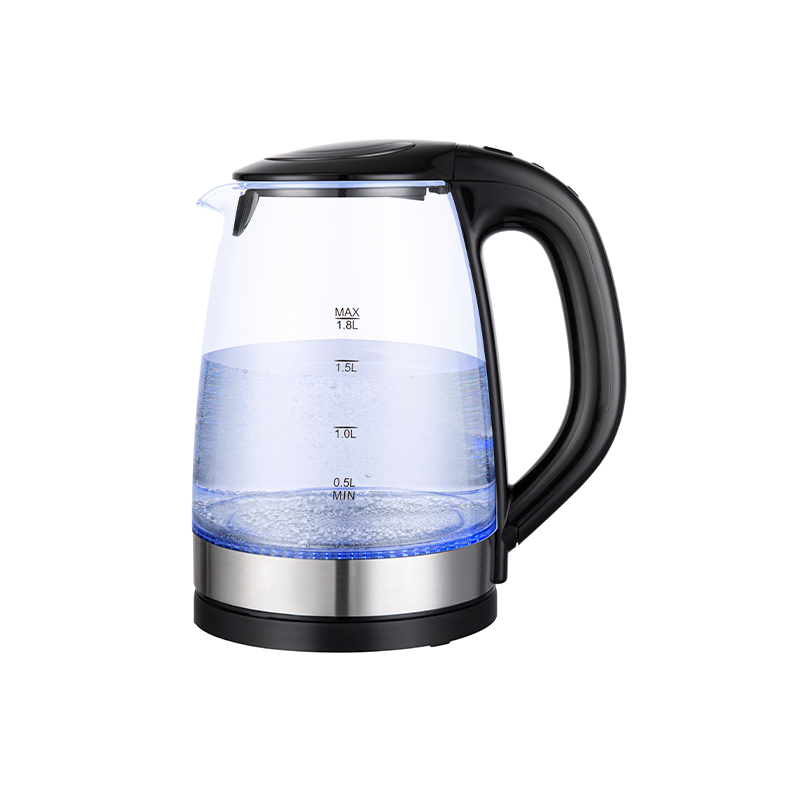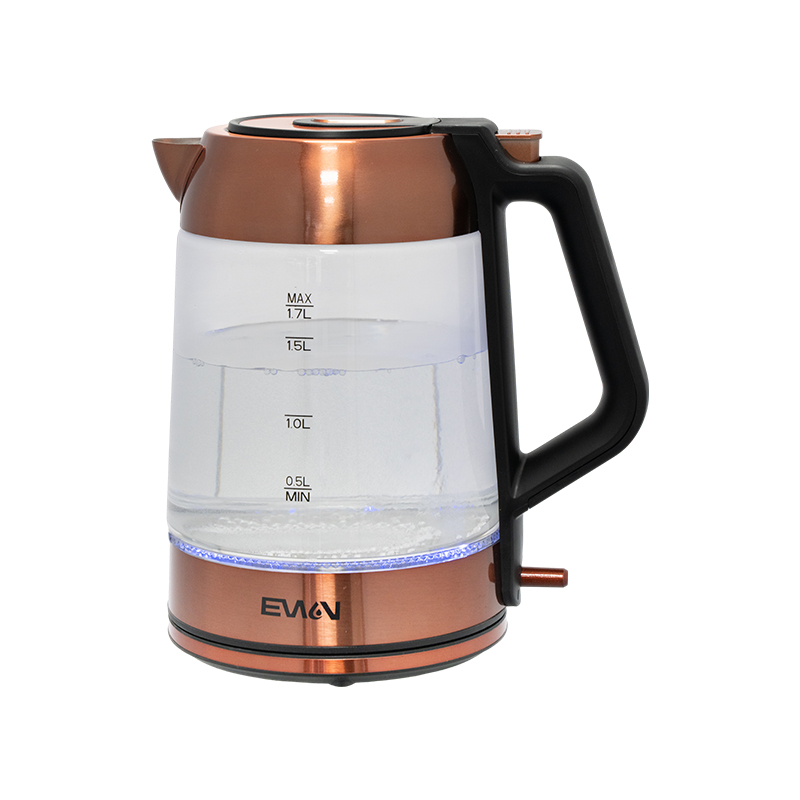+86-18667862027
Web Menu
Product Search
Exit Menu
What is the difference between a digital kettle and a traditional electric kettle?
There are significant differences between digital kettles and traditional electric kettles in terms of function, design, operation and user experience. The following will introduce the differences between the two kettles in detail, covering their basic principles, functional characteristics, ease of use, safety, maintenance and environmental benefits.
Basic principles
Traditional electric kettles
Basic functions: Traditional electric kettles are mainly used to heat water to boiling. Its working principle is relatively simple. It converts electrical energy into thermal energy through a heating element (usually an electric heating tube or electric heating plate) to heat the water to degrees Celsius.
Operation method: The user only needs to press the switch and the kettle will start heating. When the water boils, the built-in thermostat will automatically cut off the power supply and stop heating.
Electronic kettles
Basic functions: Electronic kettles not only have the function of heating water to boiling, but also integrate more intelligent functions, such as temperature control, heat preservation, timed heating, temperature display, etc.
Operation method: Electronic kettles are usually equipped with digital control panels or touch screens, through which users can set specific parameters such as temperature and heat preservation time. The built-in microprocessor and sensor can accurately control the heating process.
Features
Traditional electric kettle
Single function: mainly used to quickly heat water to boiling. Single function, but simple operation.
Automatic power off: Automatically cut off the power after the water boils to prevent overheating and dry burning.
Electronic kettle
Multifunctional design: In addition to heating water, the electronic kettle can also set different temperatures (such as 40℃, 60℃, 80℃, 90℃, etc.), suitable for brewing different types of tea, coffee and baby milk powder, etc.
Insulation function: After the kettle is heated to the set temperature, it can automatically enter the insulation mode to keep the water temperature within the range set by the user, usually maintaining a constant temperature within 10 to 20 hours.
Timing function: The heating and insulation time can be set, which is convenient for users to prepare hot water in advance according to their needs.
Temperature display: Equipped with LED or LCD display, it displays the current water temperature in real time, which is convenient for users to grasp the changes in water temperature.
Convenience of use
Traditional electric kettle
Simple operation: Just press the switch, suitable for users who do not need complex functions.
Fast heating: Generally, water can be heated to boiling in a few minutes.
Electronic kettle
Intelligent control: Operate through the control panel or touch screen. Although the functions are diverse, the interface design is user-friendly and easy to operate.
Diverse choices: Different temperatures and insulation times can be selected according to specific needs, which is more flexible to use.
Safety
Traditional electric kettle
Basic safety protection: Generally has anti-dry burning and overheating protection functions, and automatically cuts off the power after boiling.
Simple structure: The failure rate is relatively low, but it lacks advanced safety functions.
Electronic kettle
Advanced safety protection: In addition to anti-dry burning and overheating protection, it may also include anti-overflow protection, child lock and other functions.
Automatic detection: Intelligent sensors can monitor the internal status of the kettle in real time, adjust the heating power in time, and avoid safety hazards.
Maintenance and maintenance
Traditional electric kettle
Simple maintenance: Simple structure, easy to clean and maintain. Just remove the scale regularly and keep the kettle body and heating element clean.
Low maintenance cost: Low failure rate and low maintenance cost.
Electronic kettle
Complex maintenance: Due to the complex internal structure, more professional maintenance and maintenance are required. Users need to check the sensor and control circuit regularly to ensure normal operation.
High maintenance cost: With various functions, troubleshooting and maintenance are relatively complicated, which may require higher maintenance costs.
Environmental benefits
Traditional electric kettles
High energy consumption: Due to the lack of heat preservation and temperature control functions, water needs to be frequently reheated after boiling, and the energy consumption is relatively high.
Long service life: The simple structure makes it durable and reduces the generation of electronic waste.
Electronic kettles
Energy-saving design: The heat preservation function and intelligent temperature control function can effectively reduce power consumption and reduce the energy consumption caused by repeated heating.
Intelligent management: Through the timing and temperature control functions, users can use electricity more efficiently to achieve energy-saving and environmental protection effects.
Electronic kettles and traditional electric kettles have their own advantages and disadvantages. Which one to choose depends on the user's needs and usage habits. Traditional electric kettles are simple to operate and suitable for users who only need basic heating functions; electronic kettles are rich in functions and suitable for users who pursue intelligence and convenience. During use, users should choose a suitable kettle according to specific needs and usage environment, and pay attention to regular maintenance to ensure the safety and long-term use of the kettle.
address
No.935 Qiye Road, Zhouxiang Town, Cixi City, Zhejiang Province, China
Sale’s Email
leila@nbewin.com
sales8@nbewin.com
sales9@nbewin.com
Copyrighte Ningbo Ewin Electrical Appliances Co., Ltd. All Rights Reserved.












